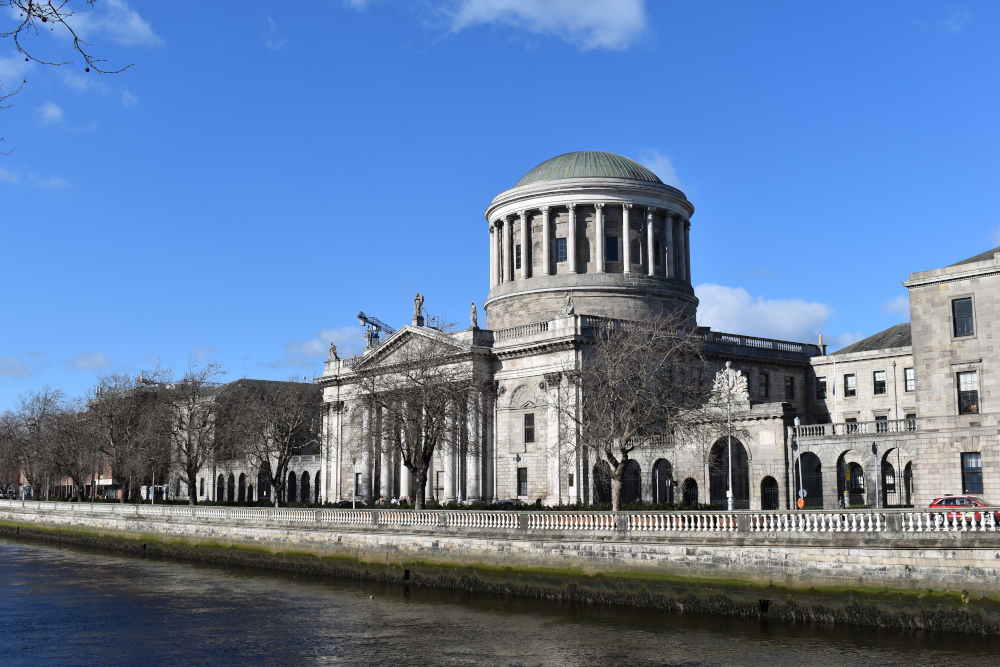High Court: Bayer’s application for preservation of confidentiality in documents relating to drug development refused

The High Court has refused an application by Bayer seeking reliefs directed towards the preservation of confidentiality in documents relating to the development of rivaroxaban.

About this case:
- Citation:[2025] IEHC 500
- Judgment:
- Court:High Court
- Judge:Mr Justice Rory Mulcahy
Delivering judgment for the High Court, Mr Justice Rory Mulcahy highlighted that “an order of the type sought could only be made where Bayer was able to assert some countervailing interest in keeping the document confidential. That interest must be established by evidence, not merely asserted.”
Background
In April and May 2025, the High Court heard the plaintiffs’ challenge to the validity of Irish patent EP (I) 1 845 961 in respect of the drug rivaroxaban.
Following the plaintiffs’ opening submissions in the proceedings, the defendant sought an order that information disclosed to the plaintiffs by way of discovery, which was designated as confidential information pursuant to an agreement between the parties, be dealt with in a manner such that the information was not released into the public domain or was otherwise caused to lose its confidentiality. The defendant also sought an order that the proceedings or parts thereof be heard in camera if necessary.
The court made an interim confidentiality order preserving confidentiality in the documents pending further order and granting liberty to the defendants to apply to make the order permanent.
Following delivery of the judgment in the case, the defendant brought an application seeking that the judgment would be redacted prior to publication, that the transcript of the trial would be redacted, and that any documents designated as confidential under the agreement between the parties and “opened” during the trial and thus no longer bound by the protection of the confidentiality agreement be deemed to retain their confidential status. In that regard, the parties agreed that any documents referred to in expert witness statements exchanged between the parties and adopted as those experts’ evidence would be regarded as having been opened.
The plaintiffs opposed the application in its entirety, contending inter alia that there was a “sea of published information” about the drug’s development and that there was no exceptionality in the case which would require the measures sought by the defendant.
The High Court
Mr Justice Mulcahy considered the requirement pursuant to Article 34.1 of the Constitution that justice be administered in public save where prescribed by law, and the exceptions to a public hearing in s.45(1) of the Courts (Supplemental Provisions) Act 1961, noting that although the defendant referenced relevant statutory provisions regarding trade secrets, including the European Union (Protection of Trade Secrets) Regulations 2018 which gave effect to Directive (EU) 2016/943 (the Trade Secrets Directive), it accepted that there was no statutory provision allowing for a trial otherwise than in public on the basis that a public trial may cause confidential information to be revealed.
The court further highlighted that although s.45(1) of the 1961 Act allowed for an in camera trial where proceedings involve the disclosure of a secret manufacturing process, the defendant did not contend that anything in the confidential trial documents disclosed any such process and accordingly, it was required to rely on the court’s inherent jurisdiction as identified in Gilchrist and Rogers v Sunday Newspapers [2017] IESC 18; [2017] 2 IR 284.
Having considered the relevant body of jurisprudence, the court was satisfied that Gilchrist was the applicable framework and that where there was no recognition in statute of an interest as being worthy of protection, it was for the defendant to establish the existence of a clear interest and a pressing need for the protections sought, “i.e. an imminent risk of harm if the protections are not put in place”.
Having regard to the defendant’s assertion that the information sought to be protected was identified as meriting protection in s.45(1) of the 1961 Act and in the Trade Secrets Regulations, the court noted that that was “an argument which cuts both ways”, finding: “Although Bayer argues that this suggests that the confidential information may be entitled to protection generally, it is equally plausible to argue that the legislation has defined the specific circumstances in which restrictions of public access to proceedings may be justified and that, at least, the identification of those specific circumstances does not provide any support for a more general entitlement to protection.”
Mr Justice Mulcahy accepted that there may be circumstances in which an order of the type sought in the defendant’s application is justified, but that in the absence of any applicable statutory provision, notwithstanding that there are some statutory exceptions for confidential information, the making of such an order “must be regarded as exceptional and could only be justified by compelling reasons”.
The judge observed that a relevant consideration identified by the courts of England and Wales relates to how and why the relevant information is deployed, and had regard to the defendant’s argument that it was a defendant to the action and did not have a choice between litigating at the expense of its information or choosing not to litigate.
The High Court concluded that this argument missed the point that Bayer was unsuccessful in its defence, and that it had elected to defend a patent to which, in this jurisdiction, the court concluded it was never entitled.
The court also observed inter alia that many of the documents over which confidentiality was asserted were first put into evidence by the defendant, and that the documents over which protection was sought were consistent with the plaintiffs’ successful assertion that the patent was obvious.
Turning to the question of whether the defendant met the approach taken in BOC Aviation Ltd and Ors v Lloyds and Ors [2024] IEHC 162 to warrant the making of the exceptional orders sought, the court outlined that the defendant would be required to show a real risk of harm to its commercial interests in protecting company information, involving an assessment of whether the information is inherently confidential and whether any risk of harm from its disclosure is established, emphasising: “Only if such a risk is established does the question arise as to whether an order of the type sought by Bayer is justified having regard to the constitutional imperative that justice be administered in public.”
Finding it necessary as part of this assessment to correctly characterise the purportedly confidential information, Mr Justice Mulcahy found it noteworthy that the defendant made no effort to identify with any particularity what was in the documents which it claimed to be worthy of protection, rather what the court “is left with is Bayer’s assertion that the documents overall reveal its internal development process”.
The judge considered that had the defendant’s internal development process been entirely hidden from view its assertions of confidentiality and harm could be understood, however the defendant had failed to assert confidentiality over a number of documents revealing its development process, the process itself had already been extensively publicly discussed by the defendant in a number of journal articles, and all experts had confirmed that the development process revealed in the documents was consistent with their expectations for how a new anticoagulant drug would have been developed.
In those circumstances, the court concluded that what the defendant sought to protect was “a small body of documents which reveal, overall, that Bayer’s process for developing the Patent was precisely what the experts would expect it to have been and which Bayer has described in some detail elsewhere” and that the documents could neither meet the definition of a trade secret within the Directive nor did the defendant identify anything the disclosure of which would cause it harm.
Conclusion
Accordingly, the High Court refused the application and indicated that pending the determination of any appeal, the judgment in the case would be published with the proposed redactions and a stay placed on the discharge of the interim order.
Sandoz AG and Rowex Ltd v Bayer Intellectual Property GmbH [2025] IEHC 500





